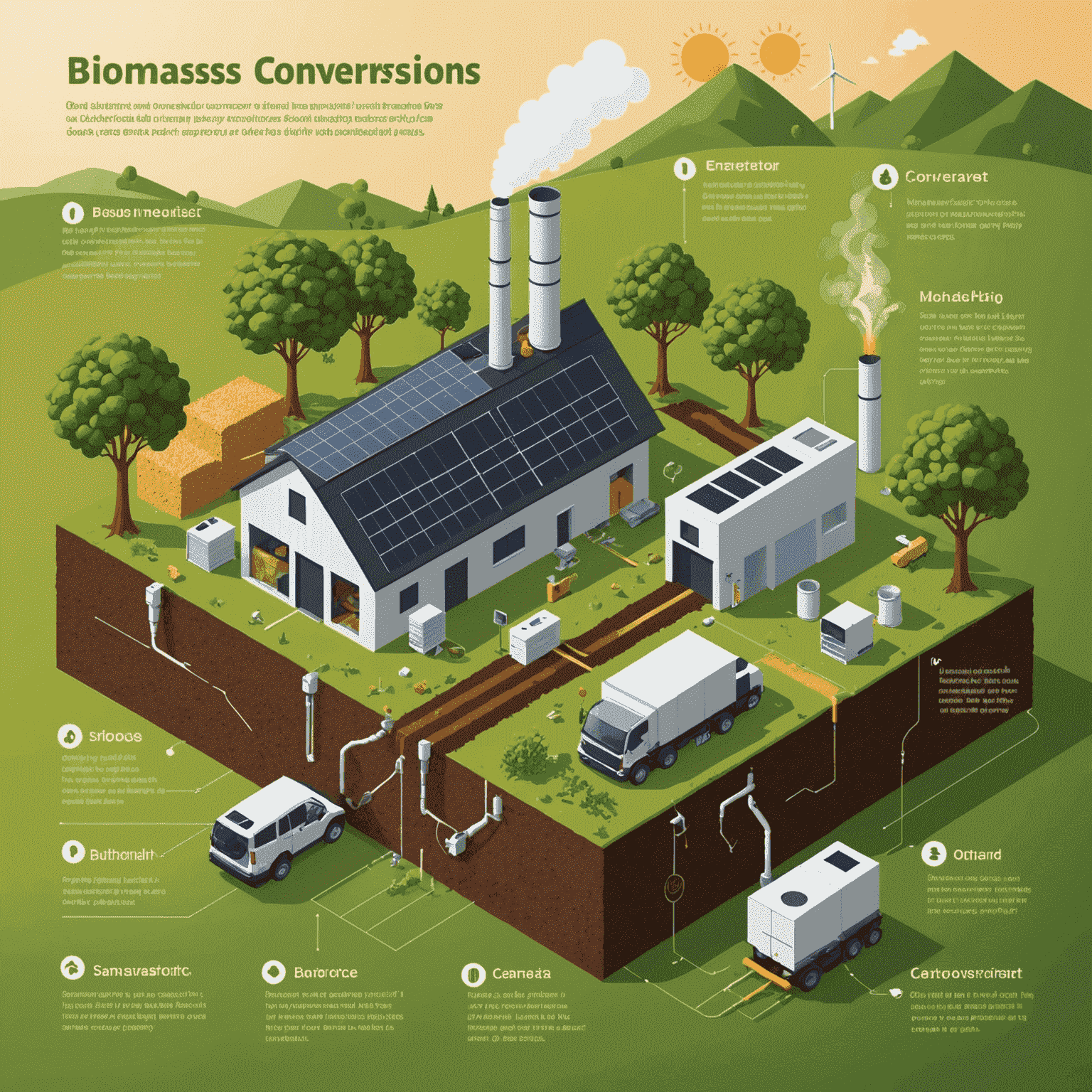Biomass Basics: Understanding the Fundamentals

In the quest for sustainable and efficient energy solutions, biomass has emerged as a promising contender in the realm of clean energy production. This organic energy source offers a unique approach to harnessing nature's power for our modern needs.
What is Biomass?
Biomass refers to organic matter derived from living or recently living organisms, primarily plants and animals. This includes materials such as wood, crop residues, and even organic waste. The key to biomass energy lies in its ability to store solar energy through photosynthesis, making it a renewable resource when managed sustainably.
How Does Biomass Energy Work?
The process of converting biomass into usable energy involves several methods:
- Direct Combustion: Burning biomass to produce heat or electricity.
- Gasification: Converting biomass into a combustible gas mixture.
- Pyrolysis: Heating biomass in the absence of oxygen to produce bio-oil.
- Anaerobic Digestion: Breaking down organic matter to produce biogas.

The Role of Biomass in Clean Energy Production
Biomass plays a crucial role in the transition towards a more sustainable energy future:
- Carbon Neutrality: When managed properly, biomass can be carbon-neutral, as the CO2 released during energy production is offset by the CO2 absorbed during plant growth.
- Waste Reduction: Utilizing organic waste for energy production helps reduce landfill waste and methane emissions.
- Energy Security: As a domestic resource, biomass can reduce dependence on imported fossil fuels.
- Rural Development: Biomass energy production can create jobs and stimulate economic growth in rural areas.
Challenges and Considerations
While biomass offers numerous benefits, it's important to consider:
- Sustainable sourcing to prevent deforestation or competition with food crops
- Efficient conversion technologies to maximize energy output
- Proper emissions control to minimize air pollution
- Balancing biomass use with other renewable energy sources for a diversified energy mix
Conclusion
Biomass energy represents a vital component in the mosaic of clean energy solutions. By harnessing the power of organic materials, we can create a more sustainable and efficient energy landscape. As technology advances and our understanding deepens, biomass will continue to play an increasingly important role in our journey towards a cleaner, greener future.